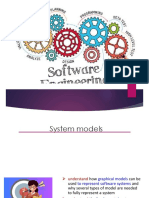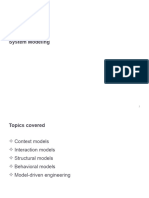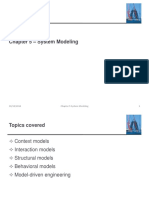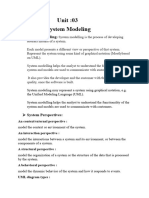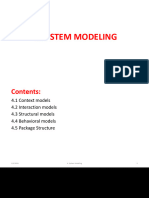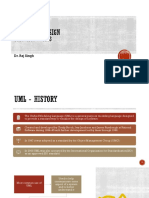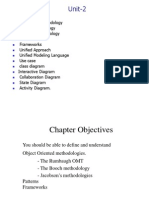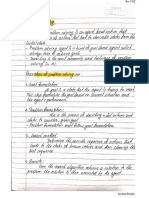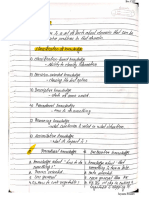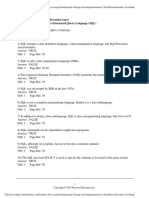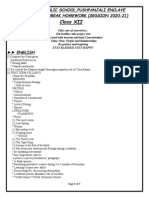0% found this document useful (0 votes)
20 views24 pagesUnit 5 - System Modeling
System modeling involves creating abstract models to represent different perspectives of a system, primarily using graphical notations like UML. It aids in understanding system functionality, clarifying existing systems, and communicating requirements for new systems. Various perspectives such as external, interaction, structural, and behavioral models are utilized to document and design systems effectively.
Uploaded by
sunilstha68Copyright
© © All Rights Reserved
We take content rights seriously. If you suspect this is your content, claim it here.
Available Formats
Download as PDF, TXT or read online on Scribd
0% found this document useful (0 votes)
20 views24 pagesUnit 5 - System Modeling
System modeling involves creating abstract models to represent different perspectives of a system, primarily using graphical notations like UML. It aids in understanding system functionality, clarifying existing systems, and communicating requirements for new systems. Various perspectives such as external, interaction, structural, and behavioral models are utilized to document and design systems effectively.
Uploaded by
sunilstha68Copyright
© © All Rights Reserved
We take content rights seriously. If you suspect this is your content, claim it here.
Available Formats
Download as PDF, TXT or read online on Scribd
/ 24


